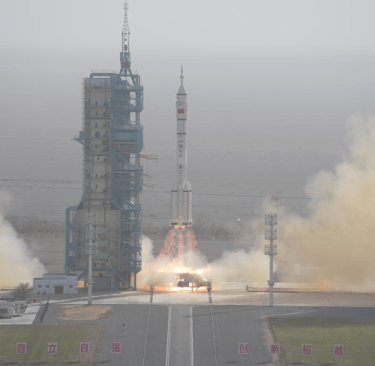China Executes First-Ever Emergency Launch After Shenzhou-20 Damage; Shenzhou-22 Docks with Tiangong
China carried out the first emergency spacecraft launch in its crewed spaceflight history on Tuesday, successfully sending the Shenzhou-22 spacecraft to secure the safe return of astronauts aboard the Tiangong Space Station after a debris impact crippled their original ride home.
CHINA,POLITICS
global n press
11/26/20252 min read


Beijing — Global N Press — Nov. 26, 2025
China carried out the first emergency spacecraft launch in its crewed spaceflight history on Tuesday, successfully sending the Shenzhou-22 spacecraft to secure the safe return of astronauts aboard the Tiangong Space Station after a debris impact crippled their original ride home.
The unmanned Shenzhou-22 spacecraft successfully docked with the Tiangong Space Station at 3:50 p.m. Beijing time on Nov. 25, according to the China Manned Space Agency (CMSA).
A Full-Scale Emergency Response
The emergency launch was triggered on Nov. 5, when the Shenzhou-20 return capsule suffered a suspected micro-debris impact, leading to cracks in one of its windows. Engineering analysis concluded the damage rendered the vehicle unsafe for the high-heat stresses of atmospheric re-entry.
This incident temporarily left the three-member Shenzhou-21 crew without a dedicated return craft — a critical risk in orbital operations.
In response, China activated its top-level emergency protocol. The mission leveraged a pre-established "rolling backup" strategy, where a rescue rocket and spacecraft are always on standby at the launch site. This enabled the entire operation to be completed within just 20 days.
Global analysts note that such compressed timelines are rare in space operations, where preparations typically last 40–60 days.
Shenzhou-22 Launch and Docking
After entering orbit on Nov. 25, Shenzhou-22 completed a fast-track rendezvous, docking with the forward port of the Tianhe core module. It will serve as the dedicated return vehicle for the Shenzhou-21 crew.
The agency opted for a 16-day emergency launch plan from two prepared options, as the space station and astronauts were in a stable condition, which didn't require the fastest 8.5-day rescue mode. Although launched unmanned, all preparatory work for the Shenzhou-22 spacecraft adhered to the strict standards required for crewed missions.
CMSA confirmed that the Shenzhou-21 astronauts remain in stable condition and are progressing with scheduled tasks.
Strategic Significance and Aftermath
The damaged Shenzhou-20 spacecraft will remain docked for an external inspection during a future spacewalk before being deorbited to carry cargo back to Earth, allowing for further analysis of the damaged area.
CMSA stated the mission demonstrates the effectiveness of China's centralized emergency coordination system and the reliability of its "one active mission, one on backup" rolling strategy, which places crew safety as the top priority.
The incident highlights the growing challenge of space debris. The European Space Agency's 2025 report estimates there are over 1.2 million debris objects larger than 1 cm in orbit, each capable of causing catastrophic damage to satellites and crewed spacecraft. Space experts say the operation provides a significant case study for international emergency management in low-Earth orbit.




